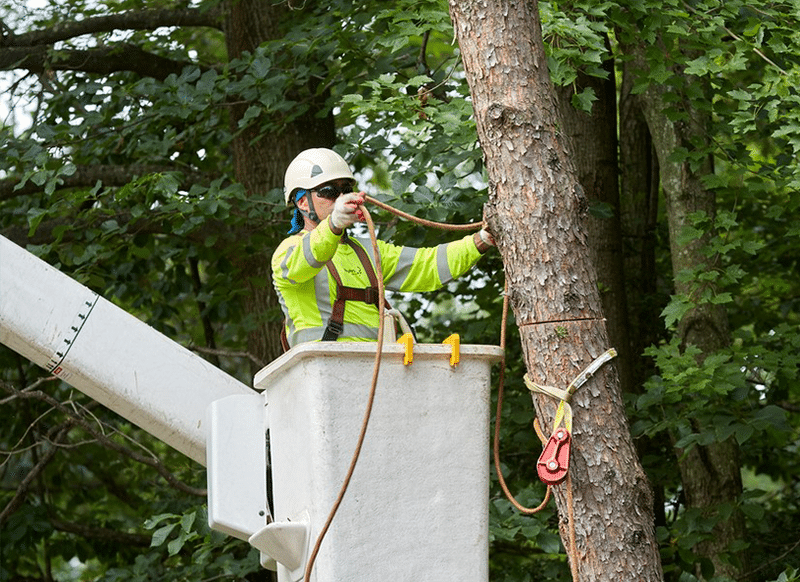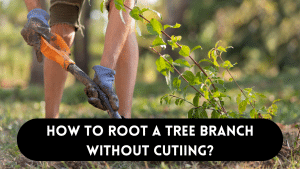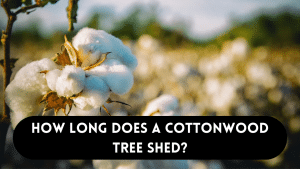Trees are not simply quiet observers of the evolving seasons; They are essential components of our environment because they provide us with shade, clean air, and a sense of peace. Trees likewise assume a significant part in the biological system, offering environment to natural life, balancing out soil, and retaining carbon dioxide to battle environmental change. Nonetheless, there are times when it becomes important to eliminate a tree, whether because of security concerns, sickness, or property improvement.
In the removal of trees, timing is everything. The decision of when to eliminate a tree can essentially influence the cycle’s prosperity and the soundness of your scene. Eliminate a tree too soon, and you could lose its advantages rashly. Stand by excessively lengthy, and you could confront security dangers or exorbitant property harm. The essential objective of this blog entry is to assist you with figuring out the variables that impact the best time for tree evacuation.
Let’s take a deeper look at the factors that determine the ideal time to remove trees.
Grasping Tree Evacuation
Characterizing Tree Evacuation
Tree evacuation alludes to the intentional course of chopping down and eliminating a tree from its area. Even though trees are beneficial to our properties and the environment, there are times when they must be cut down:
Wellbeing Concerns: Dead, ailing, or harmed trees can present huge dangers. They might drop appendages or even fall, possibly causing wounds or property harm.
Infestations of Pests or Diseases: Trees may never recover from severe diseases or pest infestations. Eliminating them can forestall the spread of the issue to other trees close by.
Real estate development: While arranging development, finishing changes, or new designs on your property, you might have to eliminate trees to make space or guarantee wellbeing.
Health in the Environment: Tree removal is sometimes necessary for your landscape’s overall health. This can incorporate diminishing packed regions to take into account better development or decreasing rivalry among trees.
When a Tree Needs to Be Removed
Knowing when a tree needs to be removed is an important part of tree care. Signs that demonstrate the requirement for tree expulsion include:
Apparent Harm: Search for broad harm, like huge dead branches, parts, or breaks in the storage compartment. The tree’s structural integrity is in jeopardy as a result of these issues.
Infection Side effects: In order to stop the spread of the disease, a tree may need to be cut down if it exhibits persistent symptoms like yellowing of the leaves, unusual growths, or sap that leaks out.
Inclining or Evacuated Trees: Trees that are inclining problematically or have to some extent removed may fall during storms major areas of strength for or, representing an impending risk.
Restricted Daylight and Wind stream: Packed trees that forestall daylight and wind stream to different plants can adversely influence the general strength of your scene. Root Causes: Removal may be the only option if the tree’s roots have harmed your property’s foundation, sidewalk, or plumbing.
Factors Affecting the Best Time of Year to Remove Trees
The timing of a tree removal is a crucial choice that should not be made lightly. A few key variables impact the best opportunity to eliminate a tree. By taking into account these variables, you can guarantee a fruitful tree expulsion process and limit adverse consequences on your scene. Let’s take a closer look at these aspects:
Climate and Environment Contemplations
Occasional Atmospheric conditions: When deciding when to remove a tree, a lot depends on the weather and local climate throughout the year. Various seasons present exceptional difficulties and advantages for tree expulsion.
Spring: Spring is a well known time for tree evacuation in light of the fact that the ground is frequently gentler because of expanded dampness. However, if you have blossoming trees, this can be a challenging time because you may need to work around their growth cycles.
Summer: Summer has stable weather, but extreme heat can be a problem, especially for people who work outside. When working in the summer, be aware of the stress caused by the heat.
Fall: Because the weather is typically mild and trees are typically past their peak growth period, fall is an excellent time for tree removal. Nonetheless, leaf fall can make cleanup a touch really testing.
Winter: Winter is a good time to remove trees because they are dormant and easier to work with. However, the procedure may become more complicated in icy or snowy conditions.
Health of trees during various seasons: Take into consideration how trees’ health is affected by the seasons. For instance, eliminating a tree during its lethargic period (winter) may put less pressure on the tree.
Considerations Specific to Species Tree Species
Different tree species have extraordinary development and torpidity designs. A few trees are best eliminated during explicit seasons when they are less dynamic or when recognizing sickness or damage is more straightforward. Research the particular necessities of the tree species on your property.
Blossoming Trees: Assuming you have blossoming trees, know about their sprouting cycles. Eliminating them while in sprout might influence the style of your scene, so arranging around these cycles is in many cases best.
Neighborhood Guidelines and Grants
Actually look at Nearby Rules: Districts frequently have guidelines overseeing tree evacuation. Counsel neighborhood specialists or arborists to guarantee you’re in consistency with any vital grants or limitations.
Evaluation of Tree Health and Condition
Prior to choosing when to eliminate a tree, completely evaluate its wellbeing. Search for indications of infection, rot, or primary harm. When it comes to determining whether or not removal is required and when it should be scheduled, an expert arborist can offer expert advice.
Spring Tree Expulsion
Benefits of Spring Tree Expulsion
Spring is a well known season for tree evacuation because of multiple factors:
Softer Terrain: The ground will in general be gentler because of expanded dampness from liquefying snow and spring downpours. This makes it more straightforward to eliminate tree stumps and roots.
Little foliage: Numerous deciduous trees are still in the beginning phases of leafing out in spring. This implies there are less leaves to discourage the perspective on branches and design, making it more straightforward for arborists to evaluate and securely eliminate the tree.
Staying away from Natural life Effect: Spring tree expulsion can limit aggravation to settling birds and other natural life that might possess the tree during the dynamic rearing season.
Contemplations and Difficulties of Eliminating Trees in Spring
While spring enjoys its benefits, there are additionally a few contemplations and difficulties to remember:
Maturing Trees: Removing flowering or budding trees when they are in full bloom may have an impact on the aesthetics of your landscape. Arranging the evacuation around their development cycles might be vital.
Stormy Climate: Spring can bring successive downpours, which can make the work site sloppy and dangerous. The crew’s safety depends on having the right safety gear and measures.
Tree Wellbeing: When a tree is removed in the spring, it is still in its active growth phase. This could prompt more weight on the tree contrasted with expulsion during its lethargic period.
Examples of Tree Species Suitable for Spring Removal
There are some tree species whose growth patterns and characteristics make them better candidates for spring removal. Some examples are:
Oak Trees: To reduce the likelihood of diseases like oak wilt spreading, oaks are frequently pruned or removed in the late winter or early spring before new growth begins.
Maple Trees: Maple trees are ordinarily taken out in the late-winter when sap stream has dialed back, making it less chaotic and decreasing the gamble of drawing in bugs.
Birch Trees: In order to make access and visibility easier, birches can be cut down in the spring before their leaves fully develop.
In outline, spring is a magnificent time for tree expulsion when you have a reasonable arrangement, particularly for species that benefit from evacuation during their dynamic development stage. Nonetheless, it’s vital to consider the particular qualities of the trees on your property and any occasional tasteful inclinations you might have.
Summer Tree Evacuation
Advantages of Summer Tree Evacuation
Summer is a season known for its steady weather patterns and broadened sunlight hours, making it a reasonable time for tree expulsion. Here are a few benefits of eliminating trees throughout the late spring:
Weather that lasts: Summer normally offers a reliable, dry climate with less tempests and precipitation, establishing a more unsurprising workplace.
Daylight: Longer sunshine hours give more than adequate chance to tree evacuation teams to finish their work securely and proficiently.
Insignificant Effect on Scene: Deciduous trees are in full leaf throughout the mid year, giving normal security screens. During this time, removing a tree may have little visual effect on your landscape.
Obstacles and Precautions for Tree Removal in the Summer
Despite the many advantages of tree removal in the summer, there are some obstacles and precautions to keep in mind:
Heat Struggle: High summer temperatures can present dangers to the tree evacuation group. Sufficient hydration, conceal, and regular breaks are fundamental to forestall heat-related ailments.
Activity of Insects: Summer is an ideal time for bug movement, including irritations like honey bees and wasps. Group individuals and anybody close by ought to know about the likely presence of stinging bugs.
Stress from Drought: Newly removed trees may struggle to establish themselves without sufficient water in areas prone to summer droughts. It’s pivotal to give sufficient post-expulsion care, including watering and mulching, to help the excess trees in your scene.
Reasonable Tree Species for Summer Evacuation
Certain tree species are appropriate for evacuation throughout the mid-year months because of their development examples and qualities. Some examples are:
Pine Trees: Evergreen pines can be cut down in the summer without having to worry about falling leaves. The ground may also be shielded from excessive heat loss and moisture loss by their needles.
Poplar Trees: Poplar trees, known for their fast development, can be taken out in summer when they are in full leaf, making it more straightforward to measure their design.
Non-Blooming Trees: Many conifers, which do not produce showy flowers or fruits, can be removed in the summer without affecting your landscape’s aesthetic appeal.
All in all, late spring tree expulsion offers good circumstances for the assignment, including stable climate and broadened light hours. However, it is absolutely necessary to take precautions to ensure the removal crew’s safety and well-being and to properly care for any remaining trees in your landscape.
Fall Tree Expulsion
Benefits of Fall Tree Expulsion
Fall can be an amazing time for tree expulsion in light of multiple factors:
Gentle Climate: Fall frequently brings gentle and stable weather patterns. This can give an ideal work space to tree evacuation, with diminished dangers of outrageous intensity or cold.
Changes in Foliage: In the fall, deciduous trees begin to shed their leaves, making it simpler to evaluate the structure of the tree and any potential issues. The removal process may be safer and more effective with this increased visibility.
Less Effect on Natural life: Fall is regularly a time of diminished natural life action contrasted with spring and summer. Eliminating a tree during this time is less inclined to upset settling birds or other untamed life.
Extraordinary Contemplations for Fall Tree Expulsion
While fall offers good circumstances, there are a few exceptional contemplations to remember:
Leaf Cleanup: The overflow of fallen leaves can make extra cleanup work during and after tree evacuation. Be ready for this additional work, particularly assuming that you have many trees to eliminate.
Tree Wellbeing: A few trees might be more vulnerable to illnesses or contaminations during fall, so it’s fundamental to assess the particular strength of the tree you intend to eliminate.
Plan for Advance: As more homeowners take advantage of the favorable weather, tree removal services may be in high demand in the fall. To guarantee a time slot with your preferred service, you should schedule your removal well in advance.
Instances of Tree Species Ideal for Fall Expulsion
Fall is for the most part reasonable for eliminating different tree species, particularly deciduous trees. A few models include:
Maple Trees: Maples can be cut down in the fall as their leaves begin to change color and fall, making it easy to see how to do so.
Beech Trees: Beech trees are frequently cut down in the fall when they are in full leaf because of their distinctive leaves and smooth gray bark.
Ash Plants: Because they are more susceptible to disease during this time, ash trees can be cut down in the fall before winter sets in.
In conclusion, tree removal can benefit greatly from the mild weather and increased visibility provided by falling leaves during the fall season. However, you need to be prepared for leaf cleanup and think about the particular features of the tree you want to cut down. Fall is an incredible choice for those hoping to guarantee the wellbeing and security of their scene.
Then, we will investigate the advantages and disadvantages of winter tree expulsion.
Winter Tree Removal Advantages and Disadvantages of Winter
Tree Removal Winter tree removal is a viable option in certain circumstances:
Advantages:
Torpid Trees: The majority of trees go into dormancy in the winter. As a result, it is simpler to evaluate their structure and remove them because they are not actively growing or producing leaves.
Diminished Foliage: Because deciduous trees shed their leaves in the fall, there is little foliage to hide branches and limbs from view. This improves the perceivability and security of the evacuation interaction.
Ground Zero: In numerous districts, the ground freezes during winter, giving added steadiness to weighty hardware utilized for tree evacuation. This can decrease the gamble of hardware sinking into delicate soil.
Challenges:
Chilly climate: For tree removal crews, working in the cold can be physically taxing and uncomfortable. Sufficient defensive stuff and customary breaks are fundamental to guarantee their security and prosperity.
Limited Lighting: The shorter days of winter mean there is less daylight available for tree removal work. Arranging and booking undertakings proficiently are essential to capitalize on accessible sunshine hours.
Specialized Tools: To function effectively in cold weather, some tree removal equipment may require adjustments or modifications.
Tree Species That Can Be Eliminated in Winter
Winter tree expulsion is reasonable for an assortment of tree animal varieties, especially those that benefit from evacuation during their torpid period. Some examples are:
Oak Trees: Oaks are much of the time eliminated in pre-spring to late-winter when they are lethargic. This forestalls the spread of illnesses like oak shrink.
Pine Trees: Because they keep their needles all year, many evergreen trees, like pines, can be cut down in the winter. Snow cover can assist with safeguarding the ground during expulsion.
Maple Trees: Because they are dormant and have shed their leaves, maple trees are an excellent candidate for removal during the winter.
Specific Gear and Procedures for Winter Tree Evacuation
To guarantee a fruitful winter tree expulsion, think about these particular hardware and procedures:
Tree Spikes or Spikes: The safety of tree removal crews is improved by these boots’ attachments, which provide additional traction on icy or snowy surfaces.
Winterized Equipment: Guarantee that all gear utilized for tree expulsion is winterized and appropriately kept up with forestall issues brought about by chilly temperatures.
Tree Wraps: Consider utilizing tree wraps to shield recently planted or remaining trees from unforgiving winter conditions.
In conclusion, winter tree removal is a good option for some situations because it has unique advantages like trees that are dormant and less foliage. Cold weather and limited daylight, on the other hand, must be addressed. To ensure a safe and successful winter tree removal, it is essential to select the appropriate tree species and provide the necessary equipment and safety measures.
Now that we’ve covered the benefits and contemplations for tree expulsion in each season, we’ll finish up this blog entry by summing up the vital focus points and stressing the significance of coming to informed conclusions about tree evacuation timing.
FAQs
When is the best opportunity to eliminate a tree on the off chance that it’s a security risk?
It is absolutely necessary to address a tree as soon as possible if it causes an immediate safety hazard due to damage, disease, or instability. In such cases, wellbeing ought to be the main concern, and tree evacuation can be completed quickly, no matter what the season.
In my region, are there any legal restrictions on tree removal?
Nearby guidelines in regards to tree evacuation can differ generally. It’s essential to check with your neighborhood specialists or civil workplaces to grasp the particular guidelines, grants, and limitations that apply to tree expulsion in your space.
Might I at any point eliminate a tree all alone, or would it be a good idea for me to enlist an expert?
With the right tools and knowledge, you can remove a small tree on your own, but larger trees and those that are close to structures should be removed by trained professionals. Tree evacuation can be dangerous, and specialists have the experience and hardware to guarantee a protected and compelling cycle.
How would I decide whether a tree is healthy or needs expulsion?
Surveying a tree’s well being includes inspecting its leaves, branches, trunk, and in general construction. Search for indications of infection, dead branches, breaks, and flimsiness. On the off chance that you’re uncertain, best to talk with a guaranteed arborist can give an expert assessment.
What safety measures would it be a good idea for me to take to really focus on my leftover trees after evacuation?
After tree evacuation, giving consideration to the leftover trees on your property is significant. This incorporates customary watering, mulching, and observing for indications of stress or infection. Talking with an arborist can assist you with fostering a post-evacuation care plan custom fitted to your scene’s requirements.
Conclusion
Tree expulsion is a vital part of tree care: Safety concerns, disease, pests, property development, or environmental health issues may necessitate the removal of trees.
Timing is crucial: It is essential to select the ideal time to remove trees in order to guarantee a successful process and minimize the effects on your landscape.
Considerations and advantages vary depending on the season: Tree removal benefits and drawbacks vary with the season. Spring, summer, fall, and winter each present their own arrangement of conditions and difficulties.
Species-explicit elements: The sort of tree on your property can impact the best time for expulsion. A few trees are more reasonable for evacuation during explicit seasons. Arriving at informed conclusions about tree expulsion timing is vital for the wellbeing and security of your scene. Here are a few central issues to remember:




